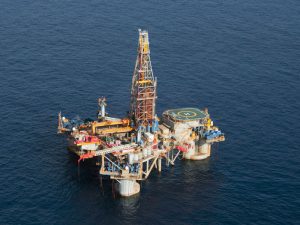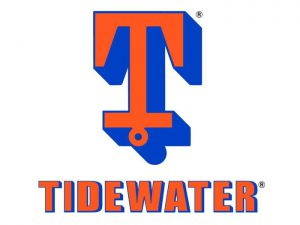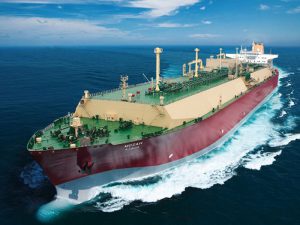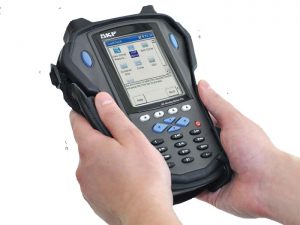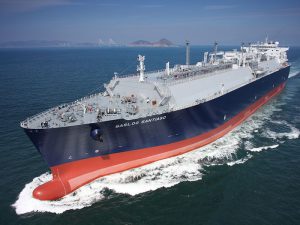Over the past 18 months, fluctuations in oil prices have caused serious disruptions within the oil and gas marine sector. While some tanker operators received a boost earlier this year due to the fall in oil prices, other sectors are struggling to cover their operating costs, resulting in rigs standing idle and transport vessels being kept in dock.
But it’s not just in oil and gas. Whether it’s exploring deep waters offshore, sailing in a luxury cruise liner, or transporting liquefied natural gas (LNG), marine operators are all seeking to lower their operating expenses. In this market, the two most important things for improving stability are strongly interlinked: minimizing costs and increasing efficiency.
In my view, there are six things that should be considered to unlock the cost savings and efficiency in the marine sector in the years ahead.
Reducing fuel consumption
According to the 2015 “The New Climate Economy” report, fuel represents 50 percent or more of a ship’s operating costs. Being able to drive down fuel consumption is important for reducing costs within the industry while also reducing the environmental impact.
Maintaining the position of a ship can be a fuel-hungry process. Many of today’s ships are the size of several football fields combined. To maintain a predetermined course or position, counteracting the effects of displacing forces such as wind, current, and wave action, is no easy task. Dynamic Positioning (DP) systems provide mariner-focused solutions to put operators back in control. They predict future motion and update a vessel’s thrust demands to prevent movement beyond the operator’s defined area. Among the various benefits of this technology is the ability to minimize fuel burn and machinery wear in situations where tight position holding isn’t essential through the use of a dedicated energy-efficient (EE) mode.
Energy efficiency is improved because fewer corrections are required as thrusters, propellers and rudders control the vessel position, delivering expected fuel savings of up to 10 percent, reducing NOx emissions by up to 20 percent and lowering equipment maintenance requirements. It helps to deliver additional operational savings while meeting increasingly rigorous environmental regulations.
Upgrading propulsion systems for reduced footprint, increased space for cargo and reduced fuel requirements
Bigger is not always better. A recent GE study revealed that careful system design could reduce the installed power requirement in a ship by up to 25% compared to the baseline, meaning the vessel requires fewer or smaller engines, translating into CAPEX savings, reduced fuel costs and increased payload within the hull.
Gas turbine propulsion system solutions can also free up space to carry more revenue-generating cargo and meet current emissions limits. For offshore support vessels, modern electric propulsion systems can further generate fuel efficiency savings of 5 to 10 percent when compared to traditional mechanical systems. These fuel-flexible gas turbines range from 4.5 megawatts to 52 megawatts and are excellent prime movers for mechanical drive, hybrid or all electric propulsion systems, all the while reducing operational costs.
Electric propulsion systems have also been deployed in various merchant marine vessels. The first electrically propelled LNG carriers in China are being built with a dual-fuel, diesel-electric power plant. Set to be completed in 2016 and 2017, these vessels will benefit from using reliable and cost-efficient power and propulsion solutions combining induction-based technology with a Power pulse Width Modulation (PWM) converter.
As new and innovative technology continues to hit the market, improved propulsion systems are reducing costs, increasing space available for cargo or other commercial activity, and reducing fuel consumption.
Addressing the skills shortage through training and remote vessel monitoring
As with many other technology and engineering sectors, there is a feeling in the marine industry that a skill shortage is already upon us. There are two ways in which the sector is addressing this.
First, better training and availability of engineering experts already in the industry. Training gives us confidence in handling whatever challenges are thrown at us. We have been extending the scope of our Marine Services Training Centers at locations around the world. Strategically placed global training centers are a requirement for building a strong knowledge base around vessel operators, and provide local support wherever it is needed. Indeed, drives, automation services and DP training take place worldwide to ensure that vessel operators are able to run equipment at the optimum level irrespective of the level of deep technical knowledge available across a fleet.
Second, new Industrial-Internet powered predictive systems on board vessels can anticipate system failures, limiting the need for emergency maintenance as systems can be repaired before an issue emerges. Modern ships are designed to empower operators and give them a comprehensive performance measurement of individual assets, fleets or the business as a whole. Analytics and insight delivered via a single, unified portal makes remote machine and systems information available for live status and productivity support, saving time and cost, and are importantly reducing the need for on-board specialists as onshore teams are able to predict issues before they arise and deploy specialists only when necessary.
Meeting the requirements of more stringent environmental regulations
While dealing with fluctuations in oil prices, operators have also had to tackle increasingly stringent environmental regulations and reduced emissions targets.
The context of environmental regulations is increasingly stringent: we are seeing Emission Control Area (ECA) zones emerge with very strict requirements for emissions. These regulations are increasingly widespread and are part of the “new normal” for the marine sector.
As such, a whole range of innovations is needed here. For example, new engine technology eliminates the need for a selective catalytic reduction system (SCR) for exhaust gas after-treatment and for storing or using urea aboard a vessel. As a result it preserves valuable cargo and tank space and reduces emissions by an estimated 70 percent.
A new application of a proven gas turbine-based power and propulsion system that’s been used in cruise ships—the Combined Gas turbine Electric and Steam (COGES) system—addresses the same issues of environmental regulatory compliance. This compact, lightweight combined cycle power plant provides power for electric drive propulsion systems, leaves more room for cargo, and meets IMO Tier III and US EPA Tier 4 regulations today, with no exhaust treatment or methane slip. While methane slip is not regulated today, many operators are concerned that it will be in the future, since methane is 21 times as damaging as CO2 from a greenhouse gas perspective.
As increasing efficiencies becomes more important in today’s volatile market, vessel operators must look at every aspect of their operating model to ensure these are met to drive long term profitability.
A new approach to financing that will enable projects and strengthen operators’ financial capabilities
Instead of taking on the full risk of vessel design and development costs themselves at the beginning of a project, operators are partnering with strategic suppliers to share the capital outlays needed to construct ships. To support vessel operators in this volatile market, a similar approach can also be taken beyond the initial construction of the ship to ensure that vessel operators have cash flexibility for operating costs and strengthened long-term financial capability beyond construction. This new approach to financing, both at the initial construction phase and later during operations, will enable the project, as well as strengthen operators’ financial capabilities, to help deliver a more cost-effective future.
Increasing innovative manufacturing techniques, cutting downtime in manufacturing docks
It is not just system design that can reduce costs; the actual implementation time of a new system is also critical. For example, many modular offshore systems are now pre-assembled at the factory to reduce installation time when deployed in dock or at sea. In one case, everything, including all electronics, controls and other auxiliary skids come pre-assembled and tested, increasing installation speed by up to 30 percent. This means less time in dock for shipbuilding or upgrade, which helps cut costs further.
Final Thoughts
In conclusion, these six areas for driving cost savings and efficiency are crucial to the future of the marine industry. More efficient and effective propulsion, power and positioning systems are driving down costs and driving up productivity.
The emergence of multi-fuel, low-emission vessels are giving operators flexibility, cost-control and helping them achieve compliance with environmental regulations. At the same time, data analytics and vessel management software is giving operators better reliability and control over maintenance costs at sea and in dock, even as more sophisticated systems are reducing the environmental strain caused by the sector.
What’s really important however is to realize that these issues can’t be solved in isolation: a whole-vessel strategy is necessary to compete and thrive in today’s global marine space.


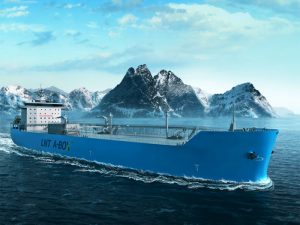
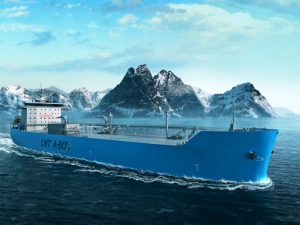
 Now set to be delivered in early 2018, the vessel will be the to utilize the LNT A-BOX containment system (
Now set to be delivered in early 2018, the vessel will be the to utilize the LNT A-BOX containment system (